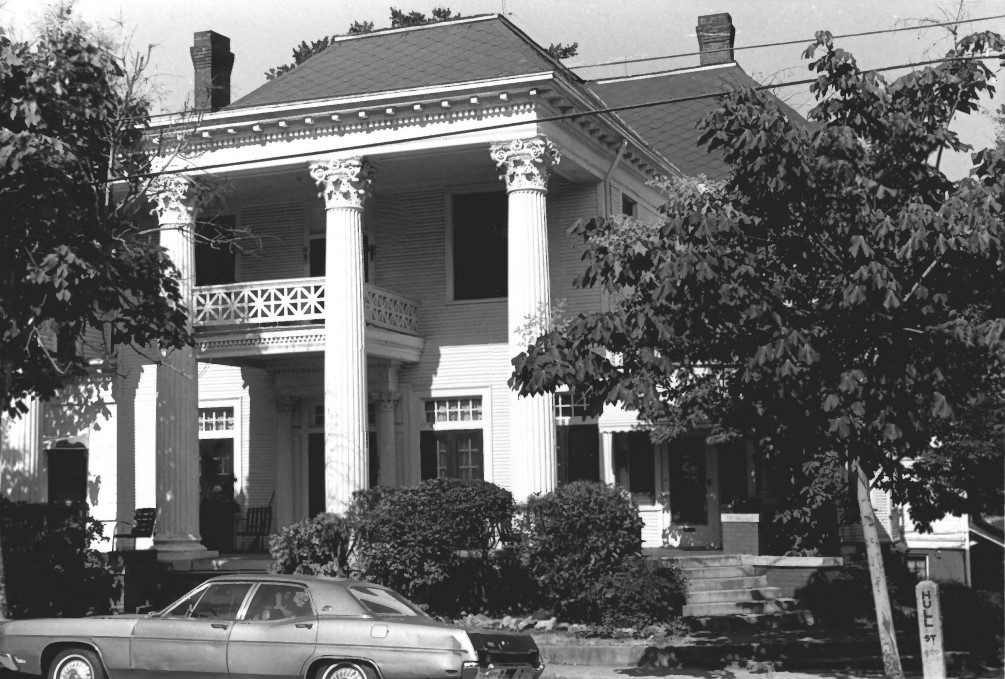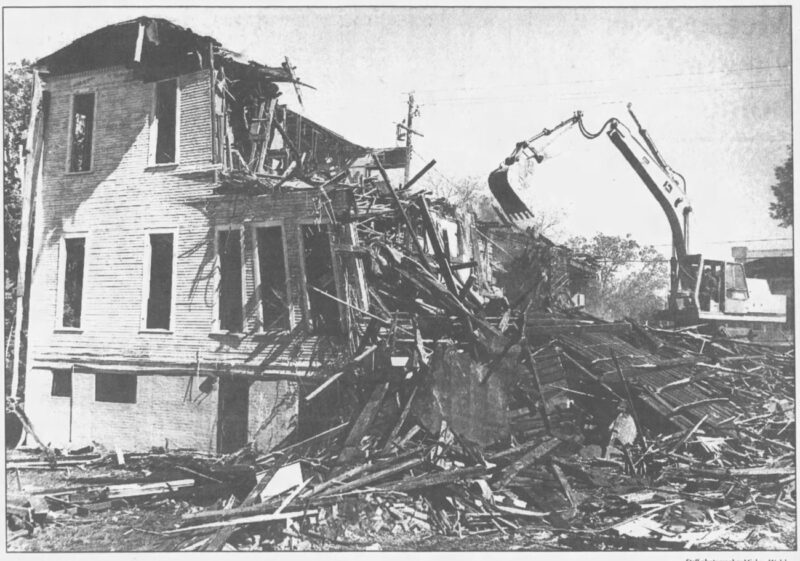| City/Town: • Montgomery |
| Location Class: • Residential |
| Built: • 1897 | Abandoned: • 1986 |
| Historic Designation: • National Register of Historic Places (1979) |
| Status: • Demolished |
| Photojournalist: |
Table of Contents
Property dates back to 1862
The Brame House, also known as the Brame-Cody-Neal House, was a historic Classical Revival-style house in Montgomery located at 402 South Hull Street. Its history dates back to 1862 when Margaret “Margery” Lee Brame, wife of James Yancey Brame, purchased the property on the corner of South Hull and South Alabama (Scott) Streets from Charles Grandison Gunter. Gunter was an Alabama House representative and wealthy landowner who moved to Brazil after the Civil War where he bought slaves and operated a plantation. According to writings left behind by James Yancey Brame, who had been sheriff of Montgomery County between 1855 and 1861, he was a distant relative of William Lowndes Yancey, a prominent and influential politician who was referred to as the “Orator of Secession”.
402 South Hull Street
When Margaret Brame died on May 25, 1866, her property was sold in order to settle the estate. Her son, William Whitman Brame, a cotton broker purchased the property and immediately put it in trust for the other heirs. In 1874, the heirs gave quitclaim deeds to Mary Jane Brame, wife of W. W. Brame, for the lot and the house which at the time faced Scott Street. In 1896, further quitclaim deeds were given to Mary Jane Brame. It’s unsure when exactly the Brame House was constructed, but tax records and city directories indicate the house was likely built about 1897. That year, the property’s value rose from $1,800 to $3,000. The city directory doesn’t show a house at the address in 1895, but W. W. Brame was listed at 402 South Hull Street in the next available volume in 1899.
W. W. Brame died in March 1911 and his wife followed in 1916. Before marrying Brame, Mary Jane had been married to a Hunter, and at her death, her children, Larry W. Hunter and Camilla Brame Cody inherited her property. Larry sold his interest in the property to his half-sister Camilla, who in turn died on March 22, 1917. Her widower John Dupree Cody continued to occupy the house on South Hull Street until 1943 when it was sold to H. W. Jackson. In 1944, Jackson sold the house to Mrs. J. C. Brock whose daughter and son-in-law, Eulalia M. Brock and James Elmer Neal, occupied the house until 1986.
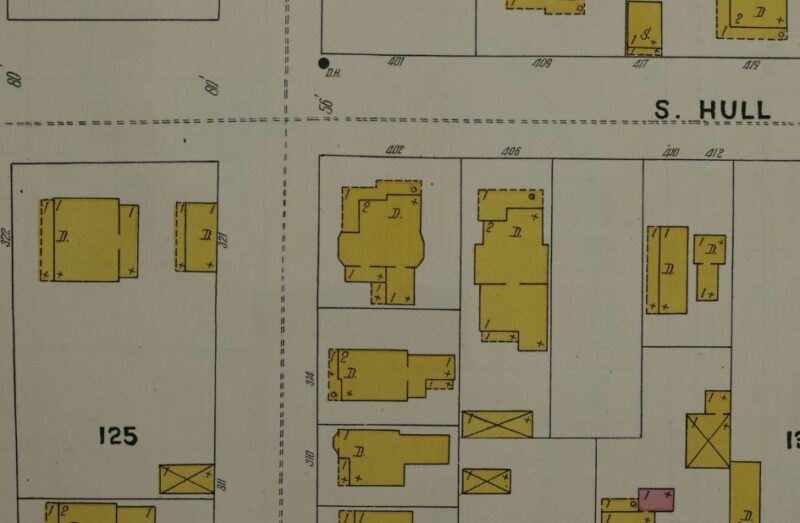
Renovations and alterations
The house was renovated throughout the years by the various owners to suit their needs. The house was originally a single-family residence but was expanded upon after the Brames’ children inherited the home after their deaths. When the old Cowles Mansion on the corner of River and Moulton Streets was demolished around 1913, its columned were saved and used in the renovation of the Brame House. The house’s interior was altered at some point and divided up into apartments. The ground floor, which was occupied by the owners, remained largely unchanged except for the enclosure of an interior staircase. After multiple alterations and renovations, the house contained eleven bedrooms and eight bathrooms.
It was added to the Alabama Register of Landmarks and Heritage on January 29, 1980, and to the National Register of Historic Places on September 17, 1980. The house was also one of the key structures for the proposed South Hull Street Historic District which was to start at the Brame-Cody-Neal House and extend three blocks south to Interstate 85.
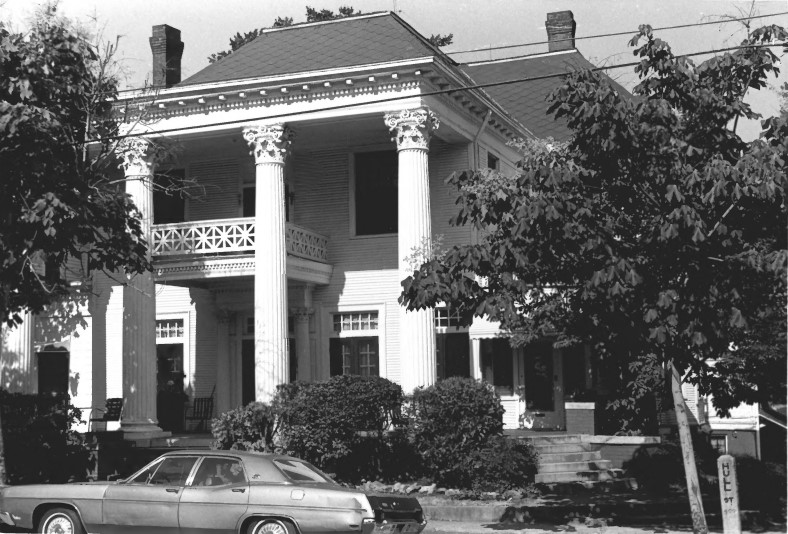
Demolition
The law firm of Beasley, Wilson, Allen, Mendelsohn, & Jemison purchased the property in 1986 with the intention of renovating the house to be used as the firm’s office. But the firm decided the home had become too badly deteriorated to be saved as estimates for renovation went as high as $350,000 and $400,000. They made the decision to have the structure demolished and sell the lot.
In February 1990, city officials mistakenly issued a demolition permit for February 22nd for the property at 400 South Hull Street. The house was gutted of its interior details and demolition had begun until a reporter for the Alabama Journal discovered the error. A member of the Montgomery Historic Development Commission was notified of the demolition, and the city halted its destruction. City officials said the house, which at one point had been divided up into apartments, had two addresses. A historic designation was granted for one address, and a demolition permit was issued for the other.
Six-month reprieve
The house was granted a six-month reprieve by the Architectural Review Board. The reprieve was intended to give the owners and local preservationists time to explore options for moving or renovating the house. As the house was designated a historic landmark, the Architectural Review Board had the power to grant the reprieve, but could only delay the demolition for six months.
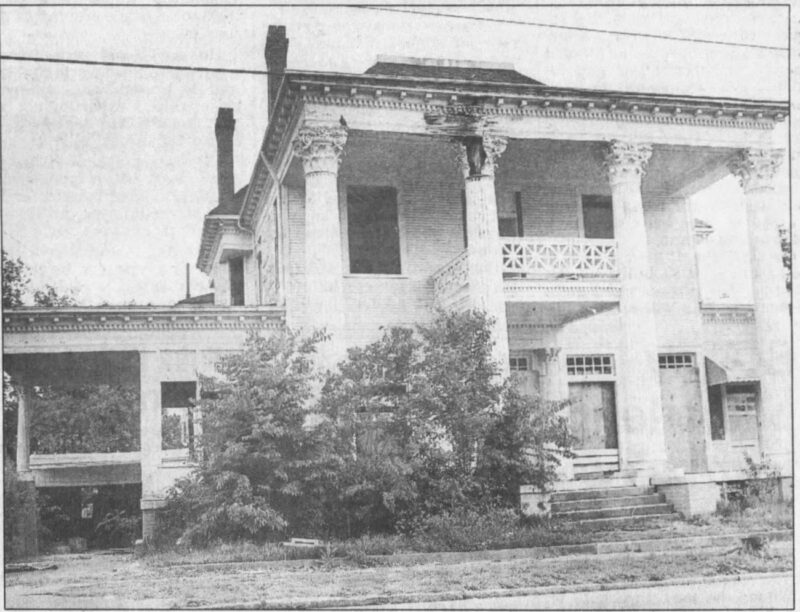
During the reprieve and without any serious inquiries, the Montgomery Jaycees were allowed to use the dilapidated structure for the civic organization’s haunted house that year. The Jaycees made the necessary requirements to bring the building up to local building and fire codes. The law firm stated that demolition would commence after Halloween if no one stepped up at the last minute to save it. The six-month reprieve expired on October 24, 1990. According to the law firm, they had explored a number of options during the six-month reprieve, including giving the house away for free to anyone that would relocate it. No one could be found. The law firm had even attempted on acquiring federal funds for an orphanage, but to no avail.
Demolition of the building commenced on November 13, 1990. Kenneth Mendelsohn, a partner in the law firm, told the Alabama Journal that “it was just an old, dilapidated house that was falling down anyway,” and that there were “no immediate plans” for the lot, but their intention was to put it up for sale. To this day, the lot where the Brame House once stood is empty, nothing more than a patch of dirt and overgrown weeds. Without the Brame House as one of the pillars of the neighborhood, the proposed South Hull Street Historic District seemingly fell apart.
References
Alabama Journal, Stephen Merelman. (November 13, 1990). Historic home smashed to splinters
The Montgomery Advertiser, John Gerome. (April 25, 1990). City gives home new lease on life
Alabama Journal, Pam Radtke. (July 18, 1990). Historical house may be haunted
Alabama Journal, Stephen Merelman. (October 19, 1990). Historic Brame-Cody-Neal home might be demolished next week

